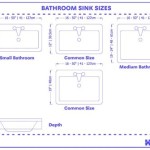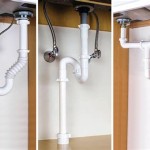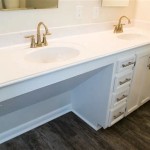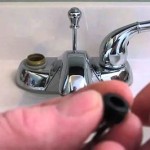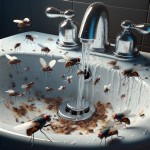Water In Bathroom Sink Stinks: Causes and Solutions
A foul odor emanating from the bathroom sink drain is a common household problem. While often dismissed as a minor inconvenience, this issue can indicate underlying plumbing concerns or hygiene deficiencies. Ignoring the stench can allow the problem to worsen, potentially leading to more significant plumbing repairs and health risks. This article will explore the primary causes of unpleasant smells originating from bathroom sink drains and detail practical strategies for addressing and preventing this issue.
Biofilm Buildup: A Slime Layer of Bacteria and Organic Matter
One of the most frequent culprits behind a smelly bathroom sink is the accumulation of biofilm inside the drainpipe. Biofilm is a complex community of microorganisms, primarily bacteria, encased within a self-produced matrix of extracellular polymeric substances (EPS). This matrix provides a protective environment for the bacteria, shielding them from disinfectants and allowing them to thrive. Biofilm forms readily in moist environments with a readily available source of organic matter, making bathroom drains a prime habitat. Showers, skincare routines and hand washing leave dead skin cells and soap residue which, when trapped in the drain, become food for bacteria.
The characteristic foul odor is a byproduct of the bacteria's metabolic processes. As bacteria decompose the organic matter, they release various gases, including hydrogen sulfide (H2S), a gas with a distinctive rotten egg smell. Other gases, such as ammonia, methane, and volatile organic compounds (VOCs), can also contribute to the overall unpleasant aroma. The specific composition of the gas mixture will vary depending on the types of bacteria present and the nature of the organic matter being broken down.
The biofilm layer not only emits unpleasant odors but can also contribute to drain clogs. As the biofilm thickens, it reduces the diameter of the drainpipe, restricting water flow and trapping additional debris. This creates a positive feedback loop, where the reduced flow promotes further biofilm growth and ultimately increases the likelihood of a full blockage. Regular cleaning is crucial to minimize the presence of biofilm and prevent these associated problems.
Addressing biofilm requires more than just flushing the drain with hot water. This may temporarily reduce the odor, but it does not effectively remove the biofilm layer. Solutions such as baking soda and vinegar, enzymatic drain cleaners, or even physical cleaning tools like drain snakes are often necessary to thoroughly eliminate the biofilm and prevent its recurrence.
Dry P-Trap: A Gateway for Sewer Gas
The P-trap is a U-shaped section of pipe located beneath the sink. Its primary function is to hold a small amount of water, creating a water seal that prevents sewer gases from entering the bathroom. Sewer gases contain a complex mixture of compounds, including methane, hydrogen sulfide, ammonia, and carbon dioxide. These gases are produced by the decomposition of organic waste in the sewer system and pose both an odor nuisance and potential health risks.
When the P-trap dries out, the water seal is broken, allowing sewer gases to flow freely into the bathroom. This often happens when a sink is not used for an extended period, allowing the water in the trap to evaporate. Infrequent use, particularly in guest bathrooms or vacation homes, is a common reason for a dry P-trap. Additionally, cracked or leaky drainpipes before the P-trap can lead to water leaking out of the trap, ultimately causing it to dry out. Ventilation issues, such as improper plumbing vents, can also contribute to a dry P-trap by siphoning water out of the trap.
Diagnosing a dry P-trap is relatively straightforward. If the sink has not been used recently and a foul odor is present, it is highly likely that the P-trap has dried out. A simple solution is to run water down the drain for a few minutes. This will refill the P-trap and re-establish the water seal, effectively blocking the sewer gases from entering the bathroom. If the odor persists after running water, this indicates a different underlying problem or that the P-trap is leaking or damaged, and should be inspected.
Preventing a dry P-trap involves regular use of the sink or taking steps to prevent evaporation if the sink is not used frequently. Pouring a small amount of mineral oil or vegetable oil into the drain can slow down the evaporation process. If the problem persists, checking for leaks in the drainpipes is essential. Replacing damaged pipes or addressing ventilation issues will ensure that the P-trap functions correctly and maintains a proper water seal.
Ventilation Problems: Improper Airflow in Plumbing System
The plumbing system relies on a network of vents to regulate air pressure and allow wastewater to flow smoothly. These vents typically extend through the roof of the building and allow air to enter the drainpipes, preventing a vacuum from forming, which would impede the flow of water. Proper ventilation is essential for maintaining the integrity of the P-traps and preventing the siphoning of water out of them. When plumbing vents are clogged or improperly installed, this can disrupt the airflow and lead to various plumbing issues, including unpleasant odors emanating from sink drains.
Clogged plumbing vents can be caused by a variety of factors, including debris such as leaves, bird nests, or even small animals. These obstructions restrict the flow of air into the drainpipes, creating negative pressure. This negative pressure can then siphon water out of the P-traps, breaking the water seal and allowing sewer gases to enter the bathroom. Additionally, improperly installed vents may not provide adequate airflow, leading to similar problems. Incorrect venting can also result in slow draining sinks, gurgling noises from drains, and even backflow of wastewater.
Diagnosing ventilation problems can be more challenging than identifying a dry P-trap. Common signs include a persistent foul odor, slow-draining sinks, and gurgling sounds coming from the drainpipes. If multiple drains in the house are experiencing problems simultaneously, this is a strong indication of a ventilation issue. However, these symptoms can also be caused by other plumbing problems, so further investigation may be required.
Addressing ventilation problems often requires the assistance of a qualified plumber. Plumbers can inspect the venting system to identify any obstructions or improper installations. They can remove any debris from the vents and ensure that they are properly connected and functioning correctly. In some cases, modifications to the venting system may be necessary to improve airflow and prevent future problems. Regular maintenance of the plumbing vents, such as inspecting and cleaning them periodically, can help prevent clogs and ensure that the system operates efficiently.
Clogs and Debris Accumulation: A Breeding Ground for Odor-Causing Bacteria
Blockages and the gathering of debris in the bathroom sink can create a prime environment for anaerobic bacteria, which thrive in the absence of oxygen. Hair, soap scum, toothpaste, and other organic matter can accumulate in the drainpipe, forming a breeding ground for these bacteria. As the anaerobic bacteria decompose the organic waste, they produce gases like hydrogen sulfide and ammonia, contributing to an unpleasant smell emanating from the sink.
The location of the clog can also influence the severity of the odor. Clogs that occur deeper within the drainpipe or in the P-trap tend to produce stronger odors because the gases have less opportunity to dissipate. Additionally, the type of organic matter contributing to the clog can affect the composition of the gases produced and, therefore, the specific smell. For instance, hair and skin cells may produce different odors compared to soap scum or toothpaste residue.
Preventing clogs and debris accumulation involves regular cleaning and maintenance of the bathroom sink drain. Using a drain stopper or screen can help prevent hair and other large debris from entering the drainpipe. Flushing the drain with hot water after each use can help wash away soap scum and other residue. Periodically cleaning the drain with baking soda and vinegar can also help dissolve minor clogs and prevent the buildup of debris. A drain snake or other physical tools can be used to remove more stubborn clogs.
If a clog is suspected, it is important to address it promptly to prevent the problem from worsening. Ignoring a clog can lead to further accumulation of debris, increased odor production, and potential damage to the drainpipes. In severe cases, professional plumbing services may be required to remove the clog and restore proper drain function.
Infrequent Use of Sink: Contributing to Stagnant Water and Bacterial Growth
A bathroom sink that is not used regularly can contribute to foul odors for several reasons. First, the water in the P-trap can evaporate over time, breaking the water seal and allowing sewer gases to enter the bathroom, as previously discussed. Second, stagnant water in the drainpipe provides a favorable environment for bacterial growth. Bacteria thrive in moist, dark, and undisturbed environments, and a seldom-used drainpipe provides all of these conditions.
When water sits stagnant in the drainpipe, it can also accumulate organic matter and debris, providing a food source for bacteria. Over time, this can lead to the formation of biofilm and other deposits that contribute to unpleasant odors. The stagnant water can also become discolored and develop a musty smell, which can further exacerbate the odor problem.
The best way to prevent odors associated with infrequent sink use is to flush the drain regularly. Running water down the drain for a few minutes every week can help refresh the water in the P-trap, prevent evaporation, and wash away any accumulated debris. This simple measure can significantly reduce the likelihood of foul odors emanating from the drainpipe.
For sinks that are used very infrequently, such as those in vacation homes or guest bathrooms, additional steps may be necessary to prevent odors. Pouring a small amount of mineral oil or vegetable oil into the drain can help slow down evaporation of P-trap water. Sealing the drain with a stopper or plastic wrap can also help prevent evaporation. Regularly inspect the P-trap for leaks and ensure that it is functioning correctly. These preventive measures can help maintain a clean and odor-free bathroom, even when the sink is not used frequently.

How To Clean A Stinky Sink Drain Home Repair Tutor

Moldy Smelling Water From Bathroom Faucet Hometalk

How To Get Rid Of The Sewer Smell From A Bathroom Terry S Plumbing
:max_bytes(150000):strip_icc()/__opt__aboutcom__coeus__resources__content_migration__mnn__images__2018__08__sink_drain-351af8e441034f319fe07f00c091d8b6.jpg?strip=all)
How To Clean A Smelly Drain Naturally
What The Heck In This Ugly Black Stuff My Wife Has Been Complaining About A Nasty Smell Coming From Her Bathroom Sink Since We Moved Into Our New House Two Years Ago

How To Clean A Stinky Sink Drain Home Repair Tutor

How Can I Help A Stinky Bathroom Sink Drain Cleaning More

How To Get Rid Of Sink Smell Benjamin Franklin Plumbing

How To Clean A Stinky Sink Drain Home Repair Tutor

Function And Cleaning Of A Sink Overflow Hole Merry Maids
Related Posts

